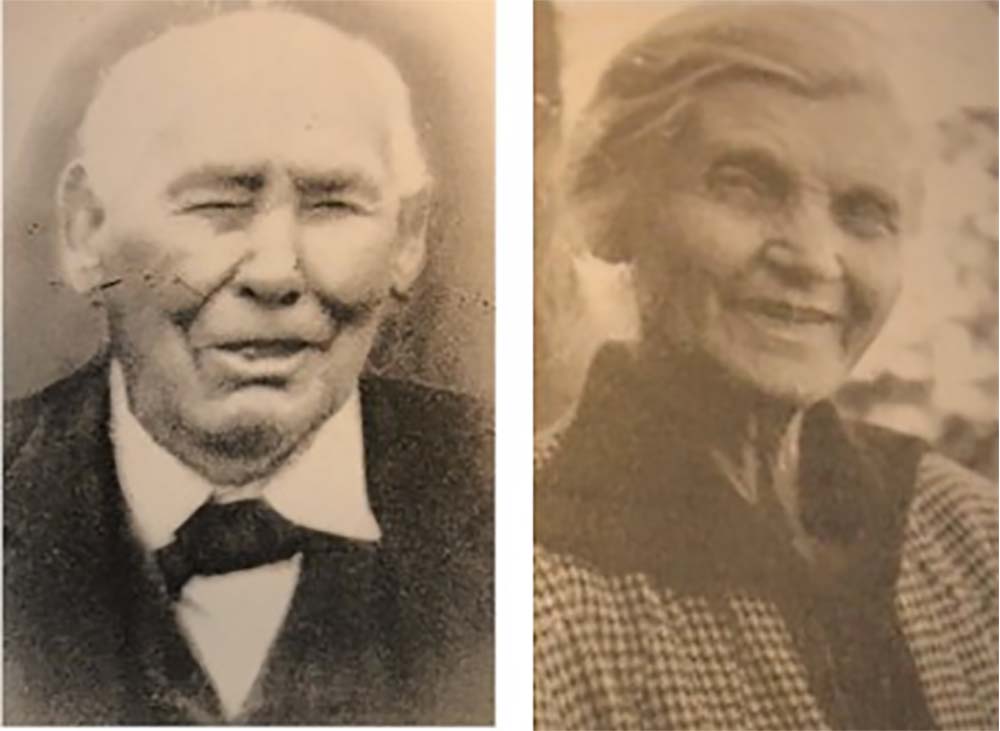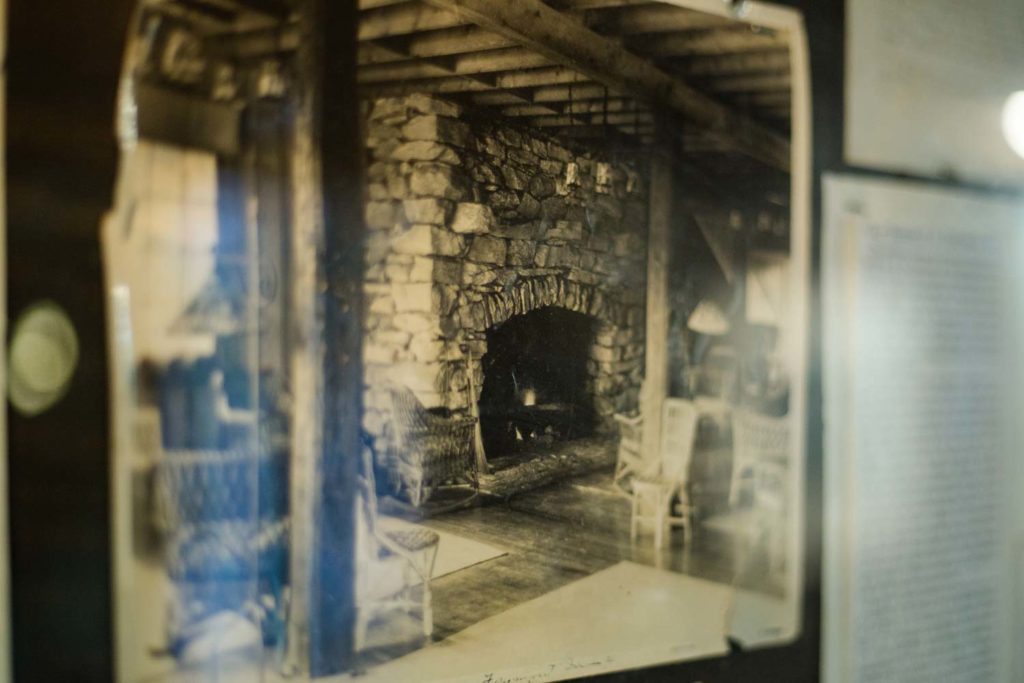Amos & Lillian Frye
In 1895, Amos and Lillian Frye lived in a white gabled house overlooking the small town of Bryson City.

Bryson City was a town of only 400 people in those days, but it was connected to the outside world via the Southern Railroad. Amos and Lillian were both prominent western North Carolina attorneys—Lillian the first female member of the North Carolina Bar Association. Together they owned the logging rights to much of what today is the Great Smoky Mountains National Park.
They were wealthy people who loved to entertain, and they realized that their beloved mountains would be the ideal place to build a country inn. They hired architect Richard Sharp Smith, who had notably been the supervising architect for Asheville’s Biltmore House, to build their dream.
A Moment in Time
It was around this time, in 1921, that the American chestnut tree was being devastated by a fungal disease known as the chestnut blight. By the end of the first half of the century 4 billion chestnut trees had been destroyed, and the species never recovered. But Amos Frye had access to the best timber of the region, so he harvested many of the beautiful old trees to sheath the roof of his new building, and to panel the walls in the rooms. Because there are no more mature chestnut trees, the Fryemont Inn could not be recreated today at any cost.
 Frye used oak and maple for the floors, locust for the post and beam construction, and poplar bark to cover the front of the exterior. Architect Smith hired the best Cherokee stone masons to build the enormous fireplaces, and local blacksmiths to make fireplace grates and tools, and door hinges, locks and straps. The building was completed in 1923 and the Fryes welcomed their first guests. Arriving by train, the guests were met by horse-drawn carriage to make the short trip up the hill to the Fryemont.
Frye used oak and maple for the floors, locust for the post and beam construction, and poplar bark to cover the front of the exterior. Architect Smith hired the best Cherokee stone masons to build the enormous fireplaces, and local blacksmiths to make fireplace grates and tools, and door hinges, locks and straps. The building was completed in 1923 and the Fryes welcomed their first guests. Arriving by train, the guests were met by horse-drawn carriage to make the short trip up the hill to the Fryemont.
The Fryes decided to add a swimming pool and construction was begun on the first swimming pool built west of Asheville in the early 1940s. Built long before the modern filtration systems, the pool was continuously spring fed and overflowed into the gutters built into the edges.
Three Families, One Legacy
Amos and Lillian operated the Inn until Amos’s death in 1935. Lillian carried on with help from their daughter Lois Randolph and her husband John Randolph, until her death in 1957. When Lillian died, the Fryemont sat empty for some time. It was a spooky place when unoccupied, and local youngsters tested their bravery by running the length of the upstairs hallway—an area they thought was haunted!
The next family to operate in Fryemont were the Dillards. W.B. Dillard was in construction and he renovated the Inn. His renovations included removing interior walls to make fewer, but larger rooms, each with its own bath. He lived in the Inn along with his family, and later passed the Inn on to his daughter, Catherine.
In l978 Sue and George Brown of Atlanta were on a motorcycle trip up the Blue Ridge Parkway and they happened upon the Inn. They were so charmed by the Fryemont that they stopped in again on their way back to Atlanta, and the following year brought their son, George Jr., who was 12. Four years later, in 1982, the Brown family became the innkeepers, and with a staff of about 35 they continue to operate the Fryemont Inn.
Today, Sue and George are semi-retired, although Sue continues to cook breakfast most mornings. George Jr. with the help of his son, Tyler, is the Executive Chef and George’s wife Monica is the Hotel Manager. Their daughter Kathryn, a student at UNC Chapel Hill, also works at the Inn when she’s not in school.
Amos and Lillian’s original home, now called the Randolph House, is located next door and is owned and operated by Viki and Tim Jones. Viki is a descendant of the Frye family.
The Fryemont Inn and the Randolph House are both listed on the National Register of Historic Places. They have been owned and operated for 98 years by only three families.







